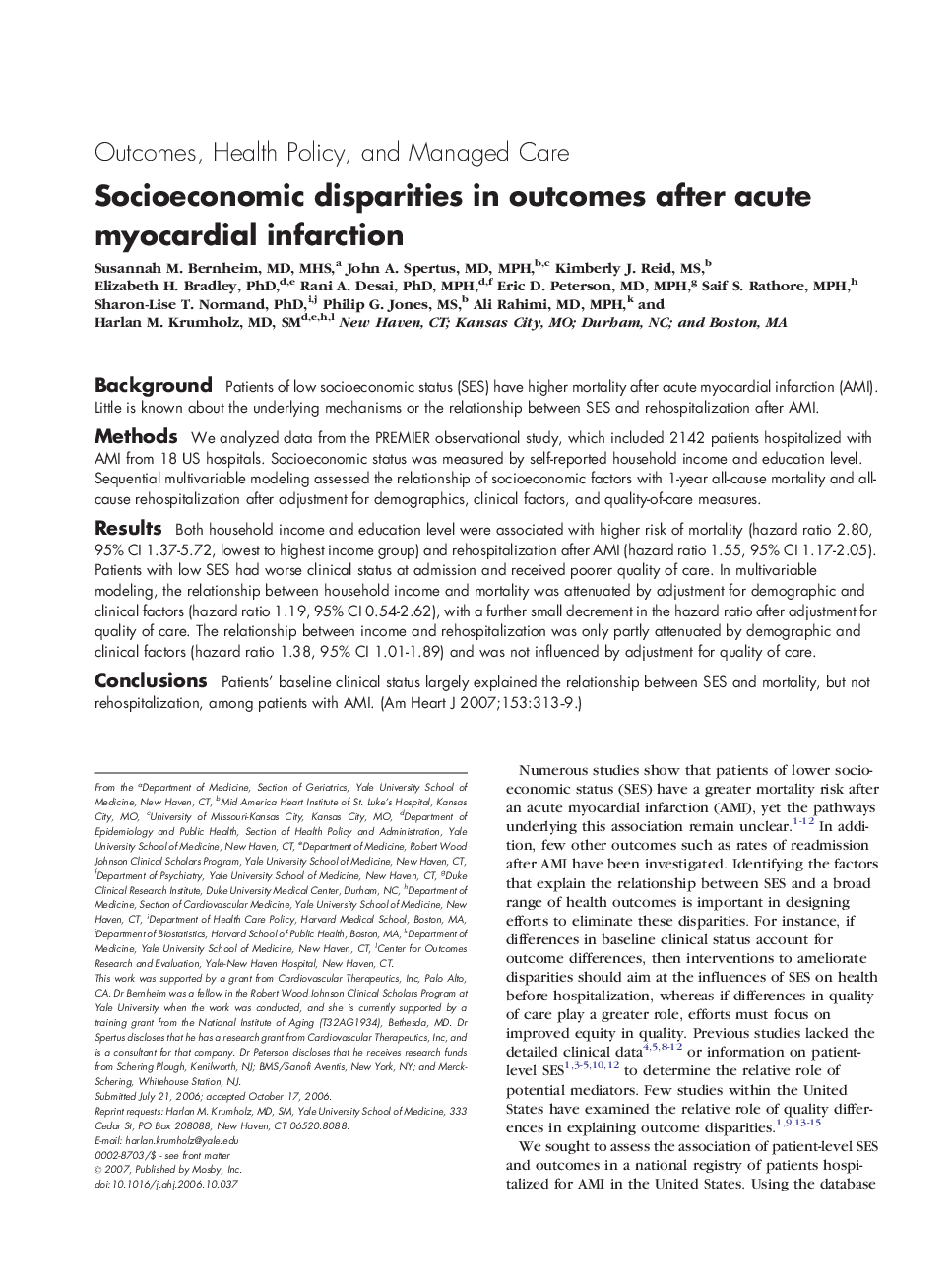| Article ID | Journal | Published Year | Pages | File Type |
|---|---|---|---|---|
| 2850038 | American Heart Journal | 2007 | 7 Pages |
BackgroundPatients of low socioeconomic status (SES) have higher mortality after acute myocardial infarction (AMI). Little is known about the underlying mechanisms or the relationship between SES and rehospitalization after AMI.MethodsWe analyzed data from the PREMIER observational study, which included 2142 patients hospitalized with AMI from 18 US hospitals. Socioeconomic status was measured by self-reported household income and education level. Sequential multivariable modeling assessed the relationship of socioeconomic factors with 1-year all-cause mortality and all-cause rehospitalization after adjustment for demographics, clinical factors, and quality-of-care measures.ResultsBoth household income and education level were associated with higher risk of mortality (hazard ratio 2.80, 95% CI 1.37-5.72, lowest to highest income group) and rehospitalization after AMI (hazard ratio 1.55, 95% CI 1.17-2.05). Patients with low SES had worse clinical status at admission and received poorer quality of care. In multivariable modeling, the relationship between household income and mortality was attenuated by adjustment for demographic and clinical factors (hazard ratio 1.19, 95% CI 0.54-2.62), with a further small decrement in the hazard ratio after adjustment for quality of care. The relationship between income and rehospitalization was only partly attenuated by demographic and clinical factors (hazard ratio 1.38, 95% CI 1.01-1.89) and was not influenced by adjustment for quality of care.ConclusionsPatients' baseline clinical status largely explained the relationship between SES and mortality, but not rehospitalization, among patients with AMI.
